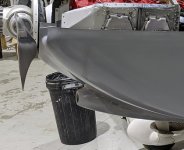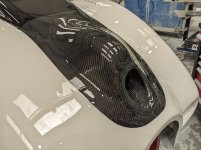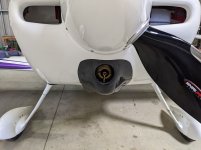I have an IO-360-M1B engine on order for my RV6.
My lower cowling was for an IO-320 with a ram air opening
What would produce better power / less stress on the engine / better fuel flow and breathing?
A - Modify or buy a new lower cowl to use Ram air into the engine
B - Use a snorkel and Modify or buy new lower cowling to be smooth (I received notice that Vans is having to redesign the snorkel system because Lycoming changed FI vendors)
Thoughts?
Thanks
Chris
My lower cowling was for an IO-320 with a ram air opening
What would produce better power / less stress on the engine / better fuel flow and breathing?
A - Modify or buy a new lower cowl to use Ram air into the engine
B - Use a snorkel and Modify or buy new lower cowling to be smooth (I received notice that Vans is having to redesign the snorkel system because Lycoming changed FI vendors)
Thoughts?
Thanks
Chris










